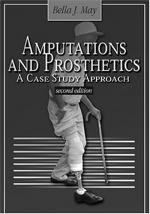|
This section contains 493 words (approx. 2 pages at 300 words per page) |

|
Amputation—cutting off all or part of a leg or arm—has been practiced since earliest times, but only out of desperation in cases of crushed or mangled limbs. It was a desperate measure because the patient was highly likely to die from bleeding after the amputation was performed. From the time of Hippocrates (460-370 B.C.) until the 1500s, the reluctant amputations that were performed usually cut through dead rather than living tissue because the dead tissue did not hemorrhage. Stumps were then cauterized with red-hot irons or boiling oil or tar, which stopped most bleeding and was also considered to help prevent rotting. The German surgeon Fabricius Hildanus ( Wilhelm Fabry; 1560-1634) used a red-hot knife for amputations, which accomplished both removal of the limb and control of bleeding at the same time. Cauterization was, of course, terribly painful to the unfortunate patient. A giant...
|
This section contains 493 words (approx. 2 pages at 300 words per page) |

|


